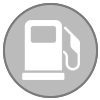GPS Navigation
A navigation system, whether portable or installed may be the ultimate convenience feature. Not only can they provide directions for trip planning like a map, they also provide directions in real time while you drive to direct you to your destination by the shortest or quickest route. Most navigation systems, when accompanied by a video display, display a map. Some of them also overlay points of interest—like gas stations, restaurants, ATMs and all kinds of other convenient stopping points on the map, too.
There are three popular kinds of navigation systems for use in cars: an installed navigation system, a portable navigation system or a navigation app for a smartphone. All have their pros and cons.
Millions of places stored on memory cards, DVDs or fast hard drives
Get there with units that provide real-time traffic updates and auto-rerouting.
Sync your mobile phone to your navigation system for hands-free calling iPod
Up to 9” wide screens ideal for navigation, MP3s, pictures and movies.
Fully control the playback of your ipod, iPhone or Android music and video library
Some systems let you use your voice for control and destination input voice
The average vehicle uses 12% less gas when equipped with a GPS Navigation unit
Installed Navigation
Installed navigation systems are the kind that are often already installed in the car at the factory. In an installed navigation system, the GPS system is included in the head unit and the navigation software (the map) is contained in the car’s head unit. These are also available in aftermarket head units. The benefits of installed navigation is that they are convenient and they work seamlessly with the audio system. Because the navigation system is contained in the same unit as the CD/DVD player, and the radio, you can listen to music without having to worry that you’ll miss an instruction telling you where to turn. The fixed navigation system will pause or mute the music playback, give the directions and then resume the audio. If you’re a music lover, that’s an important feature.
Installed navigation is also always at your fingertips. Because it’s a permanent fixture in the car, you can’t forget to bring it along, or forget to charge its batteries. In addition, many fixed navigation systems include connections to the car’s electrical system that allow it to maintain route guidance when satellite signal reception is weak—in tunnels, on a winding forest road, or in the midst of many tall buildings.
The drawbacks of fixed navigation systems are that, compared to a navigation app on your phone, they are expensive. Also, compared to a navigation app on the phone, the map and the list of points of interest may not be as up-to-date as the navigation app. Updating the map may be costly. Finally, because it is installed in the car permanently, fix install navigation isn’t portable. You can’t use it in a rental car or to help you get from the parking lot to your meeting if you must park far away.
Portable Navigation
Portable navigation devices are navigation-only (or they may also include a few other features) devices that can be temporarily installed in the car and removed easily. It includes all the navigation hardware and software in a package about the size of a mobile phone and includes a video screen. Included with the device is a windshield mount or a dashboard mount that places the device conveniently above the dashboard for easy viewing. The unit is powered either by a battery or a plug and a wire that connect the unit to a power receptacle (lighter socket) in the vehicle.
Compared to fixed install navigation, the portable device is often much less expensive and it can be moved from car to car easily. The map and the software can often be updated easily by connecting it to an internet connected computer via USB. However, the portable navigation device doesn’t include the connection to the car’s electronics that help it provide route guidance when satellite signal reception is poor. If you are in a hurry, starting the portable device may seem slow.
Smartphone Navigation App
Many smartphones include navigation apps that are very easy to use. When you’re not driving, the familiar smartphone interface is simple and intuitive when you can hold the phone in one hand and operate it with the other. While you’re driving, two handed phone operation can be inconvenient and even dangerous. The smartphone isn’t designed to be operated while you’re driving.
The advantage of the smartphone app for navigation is that the interface is familiar and the data is constantly updated. They are also often integrated with a search engine, so once you find where you want to go on the internet, you can simply click for directions or to navigate.
Some new aftermarket head units include the ability to display and control the smartphone’s app through the larger and easier to read touchscreen mounted in the dashboard. These implementations differ from head unit to head unit. If you have an iPhone or an Android phone, you may want to check out head units that feature Apple Car-Play or Android Auto. These features are designed to make the familiar mobile phone app appropriate for use while driving. Other implementations are also available. MirrorLink is one alternative feature.







